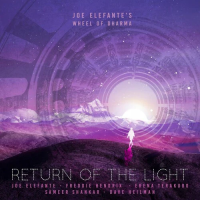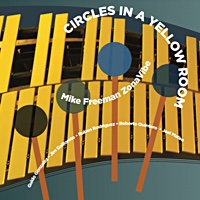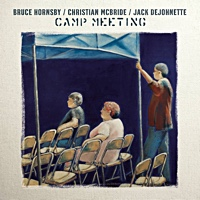Home » Jazz Articles » Red Garland
Jazz Articles about Red Garland
A Garland of Red

by C. Michael Bailey
Like pianist Wynton Kelly and Kelly's debut recording New Faces -New Sounds (Blue Note, 1951), William McKinley Red Garland performed for years as a sideman before releasing his first recording as a leader, A Garland of Red. Originally from Dallas, Texas, Garland migrated to New York City after a stint with Hot Lips Page in 1946. There, Garland recorded with Eddie “Lockjaw" Davis and Charlie Parker, basically just kicking around until drummer Art Blakey heard him one night playing a ...
Continue ReadingRed Garland: Swingin’ on the Korner: Live at Keystone Korner

by Chris M. Slawecki
It's often been written about many (sometimes less deserving) artists, but in his case it's genuinely true: Pianist Red Garland played on too many classic jazz albums--especially in bop quintets led by Miles Davis and John Coltrane--to fully count. Swingin' on the Korner, a 1977 trio date with bassist Leroy Vinnegar and drummer Philly Joe Jones recorded live at Keystone Korner, adds one more title to this uncountable list. Swingin' reunites Garland with drummer Jones, who teamed with Garland and ...
Continue ReadingMusic’s Where You Find It

by Chris M. Slawecki
Ajoyo Ajoyo Ropeadope 2014 Multi-reed player Yacine Boulares has picked up, and left behind, musical footprints literally all around the world. He was born in North Africa (Tunisia) but grew up in Paris, where he studied philosophy at the Sorbonne and jazz performance at the National Conservatory and New School for Jazz. As a Fulbright scholar, Boulares continued his musical studies and began his professional career in New York City, where he deeply connected ...
Continue ReadingRed Garland: Swingin’ on the Korner: Live at Keystone Korner

by C. Michael Bailey
Dismissed as a subpar “cocktail pianist" when he joined Miles Davis' first great quintet in 1955 when Davis had returned from chemical exile, William “Red" Garland would go on to define mainstream jazz piano on a series of recordings (as leader and sideman) taped between 1955 and 1962. Readily identifiable was his easy swing, supreme command of the blues and his liberal use of block chords that became a Garland trademark. The pianist would anchor a piano trio with bassist ...
Continue ReadingRed Garland Trio: Swingin' on the Korner

by Stefano Merighi
Il fiuto di Red Garland, a suo tempo, suggerì a Miles Davis di ingaggiare prima Philly Joe Jones e poi John Coltrane, per formare un simpatico quintetto. Solo per queste intuizioni Garland andrebbe posto su un piedistallo nel mondo del jazz. Ma William Red era anche un gran pianista, realizzatore di una sintesi mirabile tra l'eredità di un Count Basie, le innovazioni boppistiche di Bud Powell e la formalizzazione di quello stile mainstream che negli anni '50 influenzò legioni di ...
Continue ReadingRed Garland: The 1956 Trio

by Eric J. Iannelli
By the time pianist Red Garland recorded the amalgam of tracks on this essential disc, he'd been playing with the Miles Davis Quintet for about a year. Although he had performed alongside big names before, including Charlie Parker and Lester Young), The Quintet (as it would come to be known) was truly an all-star lineup: Garland, plus John Coltrane, Philly Joe Jones and Paul Chambers. Garland--with a modest profile in 1955 that would more or less remain that way--reached a ...
Continue ReadingRed Garland: Red Garland's Piano

by Samuel Chell
Bass players owe Red Garland the biggest debt of all whereas piano players may be forgiven for blaming their left-handed awkwardness on the incalculable influence of the former boxer-turned-pianist. Because of Garland, pianists no longer voiced, for example, a C7 chord in root position (C-E-G-Bb) but made a habit of placing the third (E) or flatted seventh (Bb) on bottom, while assigning the bassist the chord's root.
Suddenly bassists were every pianist's best friend (or enemy, in the case of ...
Continue Reading
























